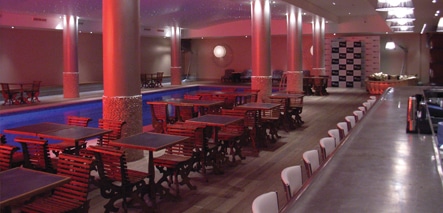This month Joe Cilia, AIS FPDC technical manager, looks at the need to pay particular attention to the detailed construction specification for swimming pools. The building must withstand a warm, humid and aggressive internal environment and the kind of external temperatures expected in the winter season, so workmanship and use of appropriate materials are essential.
 Swimming is second only to walking as the nation’s most popular physical activity, with over 22 per cent of adults and half of young people taking part on a regular basis. Approximately a quarter of pools are found in the education sector, nearly half are provided by local authorities and the remainder by the commercial sector.
Swimming is second only to walking as the nation’s most popular physical activity, with over 22 per cent of adults and half of young people taking part on a regular basis. Approximately a quarter of pools are found in the education sector, nearly half are provided by local authorities and the remainder by the commercial sector.
At first glance, working in a swimming pool might not be too different from any other fit-out and finishing contract, but when you consider the range of temperatures, humidity, water and the corrosive atmosphere caused by chlorine in the water, you start to realise that more attention is required when it comes to specifying finishes, panelling and ceilings in these environments.
Walls can be treated with tiles, renders or left as fair faced blockwork, as any plaster is too porous and would quickly absorb moisture and water which would damage the finish. However, these hard surfaces can lead to a familiar problem in swimming pools where they become too noisy, because the hard surfaces reflect sound and extend the reverberation time, creating an ‘echoey’ space which gets louder as it is used. The answer is to install more absorbent products to the walls and ceilings, but again there are specific issues that need consideration.
Suspended ceiling tiles can be specified with high levels of humidity resistance (HR); the manufacturers are aware of the issues and will be able to help with the selection to ensure that the correct class of sound absorption can be provided alongside HR. The suspension system and grid will also need to be specified so that it won’t corrode. This is sometimes done using powder coated components as well as stainless steel and galvanised sections. Remember that there are several grades of stainless steel depending on the type of conditions that can be encountered.
Special attention will be needed for any anchors, which should be specified by the architect in accordance with BS 8539-2012, ensuring that there won’t be a reaction with the hangers or other components when they come in to contact with each other. Some manufacturers have developed discontinuous ceilings rafts and islands that can be suspended without grids. Others have stretch ceilings made of a thin membrane stretched between wall channels, as well as sound absorbing wall panels that can include applied graphics that can be bespoke-made to meet the interior designs.
Chlorine is very corrosive, as well as dangerous, and is being replaced in some pools with ultra violet, which makes for a more pleasing and odourless place to spend time. Some pools, especially in the private sector, are using saline or salt water which, although slightly less corrosive, still has a huge potential to corrode ferrous metals and many alloys, as anyone who owns a car and lives on the coast knows.
So the message here is be aware that specifying and installing finishing products in swimming pools can be fraught with danger and have dire consequences should the suspension system or anchor fail at some point in the future. Always consult the manufacturer, in writing, and if you are unsure check again.
Joe Cilia
Technical manager,
AIS FPDC
T: 0121 707 0077


